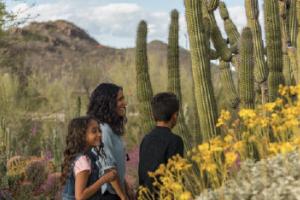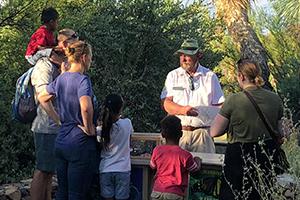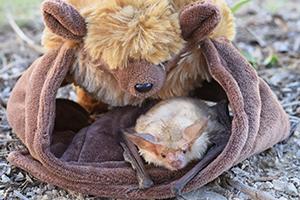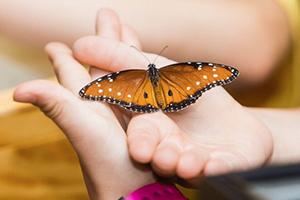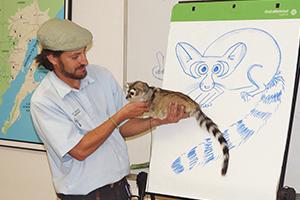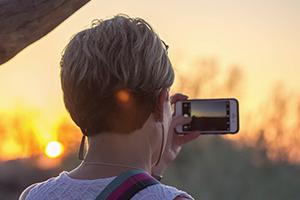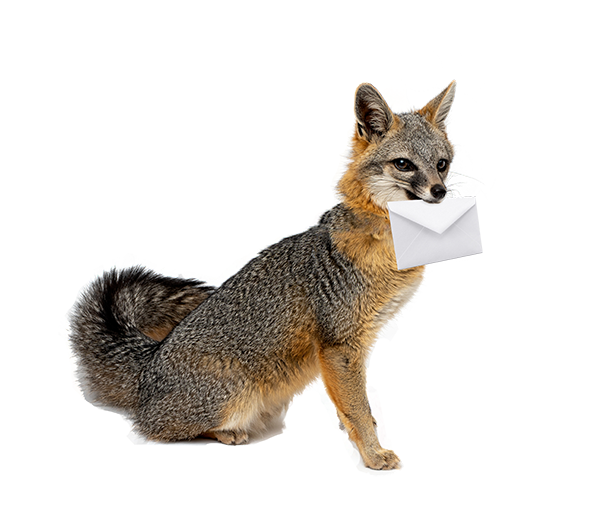Desert Museum Science and Conservation through the Decades
1950s
Museum co-founders, Bill Carr and Arthur Pack, both followed and contributed to advances in desert ecology and natural history, and championed many conservation causes.
1960s
William Woodin, the Museum’s second Director published herpetology research in herpetological and natural history journals and books.
Museum Curators and keepers contributed to captive breeding research, veterinary science, natural area designations and native plant horticultural introductions. They helped to document thick-billed parrots, desert pupfish, San Esteban Island chuckwallas and cactus pest management.
Associate Director, Lew Walker, monitored birds on islands in the Gulf of California, and advocated for their protection, ultimately winning protection for Isla Rasa, the nesting site for 95% of the world’s elegant terns and Heermann’s gulls.
Museum staff collaborated with University scientists on extensive natural history collecting, research and writing.
1970s
The first full-time researcher at the Museum was Dr. Richard Felger, a botanist who established an Office of Ecology in 1975. Felger coordinated research teams working on Seri ethnobotany, the conservation of sea turtles in the Gulf of California, desert-adapted crop plants and he flora of the Gran Desierto in Sonora. Felger played a major role in efforts to protect the sea turtles of the Pacific coast of Mexico, publishing a major article in Science about winter dormancy in green sea turtles in the Gulf. Field studies by Lew Walker, Bill Woodin, Carlos Nagel and Richard Felger helped lay the groundwork for protection of the Sierra Pinacate (Sonora, Mexico).
1980s
Dr. Thomas Van Devender helped establish the climate and vegetation history of the Sonoran Desert using pack rat middens as proxies for paleo-environments, including co-editing the seminal book on the topic.
Museum botanists and zoologists continued foundational natural history research in herpetology, biogeography, rare plant biology, floristics, and ethnobotany.
1990s
Dr. Gary Nabhan, Director of Science, led the science staff and curators in documenting the relationship between today’s Sonoran Desert vegetation and ancestral biotic communities in the Tropical Deciduous Forest to the south — in southern Sonora, Mexico.
Van Devender, Nabhan and collaborators updated our knowledge of the plants of the Rio Mayo, fungi of the Tropical Deciduous Forest and ethnobotany of the Mayo, Guarijio and Mountain Pima tribes.
They investigated the biodiversity of the northern Sierra Madre Occidental, Mexico, and established it as a mega-center of plant diversity, as recognized by the Internatational Union for the Conservation of Nature and the World Wildlife Fund.
The Museum’s science team initiated the Forgotten Pollinators Campaign, which included field studies and rapid dissemination of scientific knowledge to policy makers and the public regarding declines in pollinators and the threats posed to desert plants. They explored the role of native pollinators in agricultural production.
The Forgotten Pollinators Campaign morphed into the Migratory Pollinators Program, documenting major flyways for lesser long-nosed bats, white winged doves, monarch butterflies, and rufous hummingbirds.
Curator, Howard Lawler, led efforts to study, protect and breed the San Esteban Island (Gulf of California, Mexico) chuckwalla, in order to establish assurance populations of this endemic lizard.
Museum geologists, Ron Ratkevich and Dave Thayer led the excavation and description of a new genus of Brachiopod dinosaur — Sonorasaurus. Sonorasaurs was named Arizona’s State Dinosaur in 2018.
Museum Trustee, Beth Woodin, argued for and helped win approval for the reintroduction of the Mexican gray wolf.
2000s
Museum botanists and ecologists, led by Director of Natural History, Dr. Mark Dimmitt, John Wiens, and Van Devender compiled the biological survey of Ironwood Forest, helping to establish the 129,000 acre Ironwood Forest National Monument.
Science Director, Dr. Richard Brusca, along with Mark Dimmitt and Tom Van Devender, initiated work to establish the >10,000 acre private nature reserve, Rancho Ecológico Monte Mojino, near Alamos, Sonora. The project is a partnership with Nature and Culture International, Pronatura, and the Mexican National Park Service (CONANP), to protect the largest remaining tract of endangered Tropical Dry Forest left in Mexico.
The Desert Museum supported the formal approval of the Sonoran Desert Conservation Plan Advisory Team, and several stakeholder meetings were held at the Museum.
Rick Brusca created the searchable, on-line, Macrofauna Golfo database — the only complete all-taxon inventory that exists for any region on earth. He established the ASDM Sustainable Seafood Program, in partnership with Monterey Bay Aquarium’s Seafood Watch; development of the Southwest Sustainable Seafood Guide.
The Museum supported founding the non-profit, SABCC (Southern Arizona Buffelgrass Coordination Center), in partnership with Brown Foundation and USGS.
Brusca established the University of Arizona Press-ASDM Press joint science book series, ASDM Studies in Natural History, with 6 volumes published.
Director of Natural History, Mark Dimmit, and botany staff compiled and disseminated >25 years of plant phenology data for the Sonoran Desert Region. This resource was one of the largest and longest-running datasets ever made available to the National Phenology Network housed at University of Arizona), which tracks phenological changes in response to climate change.
2010 to Present
Brusca and partners at the University of Arizona documented every coastal wetland and estuary in the Gulf of California, including data on size, biological diversity and conservation status.
The Museum hosted the largest-ever research conference on the Gulf of California.
Dr. Brusca worked with Desert Archeology on the coastal shell middens of Sonora, resulting in the most extensive published research to date on the archeology of coastal Sonora.
Jesus Garcia and Rick Brusca founded the Kino Heritage Fruit Trees Project, to document and conserve heritage varieties of fruit trees brought to the region from the Mediterranean during the Spanish colonial period.
Brusca and Dr. Kim Franklin, Conservation Science Manager, partnered in the Arizona Sky Island Arthropod Project, a multi-disciplinary research program at the University of Arizona that combined systematics, biogeography, ecology, and population genetics to study origins and patterns of arthropod diversity in the Sky Island Region. The Museum’s role focused on ants and botany.
In partnership with the University of Arizona, the team produced the first complete inventory of aquatic animals in the Santa Cruz River in Santa Cruz County.
Conservation Scientist, Sergio Avila, trained managers of natural protected areas in Northern Mexico, as well as community garden managers throughout the Tucson Basin, on protecting and restoring monarch butterfly habitat.
The Museum absorbed the functions of the Southern Arizona Buffelgrass Coordination Center, including its research, restoration, fundraising and outreach activities, including the annual “Save our Saguaros” (formerly “Beat Back Buffelgrass”) month, and new citizen-mapping initiatives in Tucson and Hermosillo. Franklin founded and continues to lead the Sonoran Desert Cooperative Weed Management Area, which coordinates buffelgrass and other invasive weed management among over 30 participating organizations, businesses and jurisdictions. She is partnering with University of Arizona social scientists on an NSF-funded study of cross-jurisdictional governance issues.
Franklin developed and secured initial funding for a ten-year research and demonstration project to remove buffelgrass from infested slopes of Tumamoc Hill.
The Museum’s buffelgrass team is examining the effectiveness of 20-years of buffelgrass treatment in Saguaro National Park. We will use these findings to provide future treatment recommendations and cost estimates for different environmental conditions.
The Museum is a founding partner of the Tucson Bee Collaborative (with the University of Arizona Insect Collection and Pima College Biology Department), to understand and protect the tremendous diversity of native bees in our region. High school, college and university students and community volunteers work with researchers to study local bee diversity, abundance and ecology over time.
Franklin and collaborators at Conservation Science Partners have published the first analyses of 40 years of phenology data collected by Museum botanists at the Museum and Saguaro National Park to look at varied desert plant responses to climate change.
